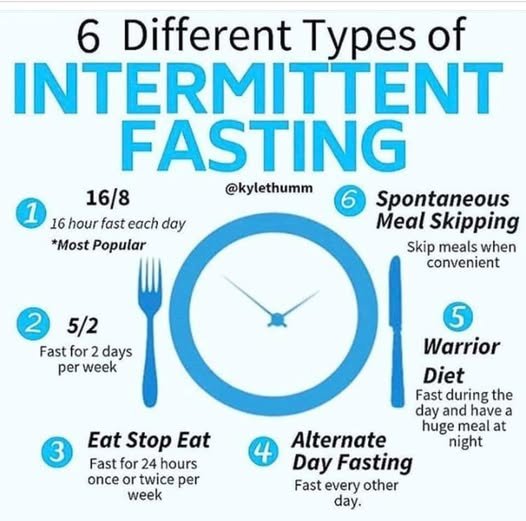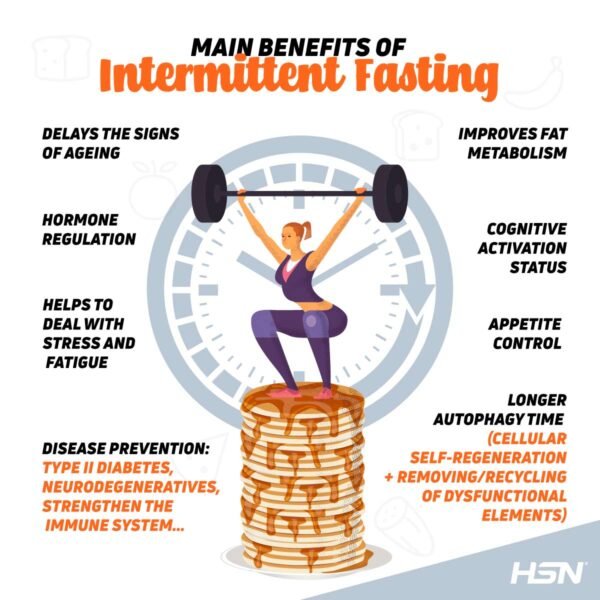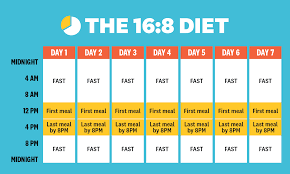Are you tired of restrictive diets that leave you feeling deprived and don’t deliver lasting results? Do you dream of a simpler approach to losing weight and improving your health without counting every single calorie? If so, you’re not alone. Many people struggle to find a sustainable way to shed stubborn fat and feel their best. This is where Intermittent Fasting (IF) enters the picture, not as another fad diet, but as a powerful eating pattern that’s gaining serious traction for its effectiveness in fat loss and its surprising range of health benefits. Forget complex meal plans; IF focuses on when you eat, opening up a world where strategic timing, not constant restriction, is the key to unlocking your body’s natural fat-burning potential.
The Intermittent Fasting Buzz: What It Is & Why It Works
So, what exactly is this “intermittent fasting” everyone’s talking about? Simply put, it’s an eating pattern that cycles between periods of eating and voluntary fasting. Unlike traditional diets that dictate what you eat, Intermittent Fasting is primarily concerned with when you eat. It’s not about starving yourself or cutting out entire food groups; it’s about giving your body a break from constantly processing food, allowing it to tap into its existing fat stores.
The magic behind Intermittent Fasting for fat loss and overall health lies in its impact on your body’s hormones and cellular processes. When you’re constantly grazing, your body is in an “fed state,” primarily using easily available glucose from your meals for energy. This keeps your insulin levels elevated. High insulin is great for storing nutrients, but it also signals your body to hold onto fat. When you enter a fasted state, however, your insulin levels drop. This low insulin environment allows your body to switch gears and access stored body fat for energy. Essentially, Intemittent Fasting trains your body to become a more efficient fat burner.
But it’s not just about insulin. Fasting also triggers other beneficial changes. Your body starts to increase the production of human growth hormone (HGH), which is crucial for fat loss and muscle preservation. It also kickstarts a process called autophagy, a sort of cellular “self-cleaning” where your cells remove damaged components and regenerate newer, healthier ones. Think of it as a metabolic reset that not only helps you burn fat but also contributes to better cellular health, reduced inflammation, and even potential anti-aging effects. By strategically extending the time between meals, you create an environment where your body naturally shifts from burning sugar to burning fat, leading to sustainable weight loss and a host of other wellness perks.
Popular Methods & How to Get Started
Now that you understand the “why” behind intermittent fasting, let’s explore the “how.” There are several popular methods, each offering a slightly different approach to structuring your eating and fasting windows. The key is to find one that fits seamlessly into your lifestyle, and for most beginners, starting gently is the best strategy.
Common Approaches to Intermittent Fasting :

- The 16/8 Method (Leangains Protocol): This is by far the most popular and beginner-friendly method. It involves fasting for 16 hours and confining all your eating to an 8-hour window. For example, you might skip breakfast, have your first meal around 1 PM, and finish your last meal by 9 PM. Most of your fasting time happens while you’re asleep, making it surprisingly manageable. This method is praised for its flexibility and ease of integration into daily life, allowing for 2-3 meals within the eating window.
- The 5:2 Diet: This method involves eating normally (not restricting calories) for five days of the week, and then significantly reducing your calorie intake to about 500-600 calories on two non-consecutive days. For instance, you might eat regularly Monday-Friday, and then have very low-calorie days on Saturday and Tuesday. This approach can be effective but requires more conscious calorie tracking on fasting days.
- Eat-Stop-Eat: This involves a full 24-hour fast, once or twice a week. For example, you might finish dinner on Monday at 7 PM and not eat again until dinner on Tuesday at 7 PM. This method is more advanced and can be challenging initially, but some find it very effective for breaking through plateaus.
While there are other methods like the Warrior Diet (20-hour fasts), the 16/8 method is generally the most accessible starting point for those new to IF.
Practical Steps for Beginners: Your Intemittent Fasting Kickstart Guide
Ready to give it a try? Here’s how to ease into intermittent fasting safely and effectively:
- Consult Your Doctor (Crucial!): Before making any significant dietary changes, especially if you have underlying health conditions, are on medication, are pregnant or breastfeeding, or have a history of disordered eating, it is imperative to speak with your healthcare provider. Intermittent Fasting is not for everyone, and your doctor can help determine if it’s safe and appropriate for your individual circumstances.
- Start Slow and Build Up: Don’t jump straight into a 16-hour fast if you’re used to eating around the clock. Begin by extending your overnight fast gradually. Try a 12-hour fast (e.g., stop eating at 8 PM and eat again at 8 AM). Once comfortable, slowly extend it to 13, 14, and then 16 hours. This allows your body to adapt.
- Hydration is Your Best Friend: During your fasting window, it’s vital to stay well-hydrated. Drink plenty of water (still or sparkling), black coffee, and plain, unsweetened tea. These beverages will help keep hunger at bay, provide energy, and ensure your body functions optimally. Avoid anything with calories, as this will break your fast.
- Prioritize Nutrient-Dense Foods During Eating Windows: Intermittent fasting is not a free pass to eat junk food. During your eating window, focus on nourishing your body with whole, unprocessed foods. Prioritize lean proteins, healthy fats (avocado, nuts, seeds, olive oil), plenty of vegetables, fruits, and whole grains. This ensures you’re getting all the necessary vitamins, minerals, and fiber, which is crucial for sustained energy and health.
- Listen to Your Body’s Cues: While some initial hunger is normal as your body adjusts, don’t push through extreme discomfort, dizziness, or weakness. Intermittent fasting should make you feel better, not worse. If you consistently feel unwell, adjust your fasting window or re-evaluate if IF is right for you. Your body will send signals; learn to interpret them.
By following these practical steps, you can set yourself up for a successful and sustainable intermittent fasting journey, harnessing its power to support your fat loss goals and enhance your overall well-being.
Beyond Fat Loss: The Broader Health Benefits of Intermittent Fasting
While fat loss is often the primary motivator for trying intermittent fasting, its benefits extend far beyond just shedding pounds. The metabolic shifts and cellular processes triggered by regular fasting can have a profound positive impact on various aspects of your health, making it a powerful tool for overall well-being.

Whole-Body Impact: More Than Just a Smaller Waistline
- Improved Brain Health and Function: Many people report enhanced mental clarity and focus while practicing IF. This isn’t just anecdotal; research suggests that fasting can boost the production of Brain-Derived Neurotrophic Factor (BDNF), a protein that promotes the growth of new brain cells and protects existing ones. This can lead to better cognitive function, memory, and even offer protection against neurodegenerative diseases like Alzheimer’s and Parkinson’s.
- Reduced Inflammation: Chronic inflammation is a silent culprit behind many modern diseases, from heart disease to autoimmune conditions. Intermittent fasting has been shown to reduce markers of inflammation in the body. By giving your digestive system a break and promoting cellular repair through processes like autophagy, IF can help calm systemic inflammation, contributing to a healthier body and potentially reducing the risk of various chronic illnesses.
- Anti-Aging Potential: The concept of “cellular clean-up” through autophagy, which we touched upon earlier, is a cornerstone of IF’s anti-aging effects. As cells repair and rejuvenate themselves, it can slow down the aging process at a cellular level. Additionally, the positive impact on hormone regulation and oxidative stress further contributes to a more youthful and resilient body. While it’s not a fountain of youth, IF certainly offers a promising pathway to healthy aging.
- Better Blood Sugar Control and Insulin Sensitivity: This is a critical benefit, especially for those at risk of Type 2 Diabetes or with insulin resistance. By allowing insulin levels to drop significantly during fasting periods, IF helps your cells become more responsive to insulin when you do eat. This improved insulin sensitivity means your body can more efficiently use glucose for energy, leading to more stable blood sugar levels and reducing the burden on your pancreas.
Simplicity and Convenience: A Lifestyle Advantage
Beyond the physiological benefits, one of the most appealing aspects of intermittent fasting is its inherent simplicity and convenience.
- Less Meal Prep: With fewer eating occasions, you’ll find yourself spending less time planning, preparing, and cleaning up meals. This can be a huge time-saver in a busy schedule.
- Fewer Decisions: For many, constant decision-making around food can be mentally taxing. IF simplifies this by providing clear eating and fasting windows, reducing “food fatigue” and freeing up mental energy for other tasks.
- Cost-Effective: Eating fewer meals can also translate to lower grocery bills, making IF a budget-friendly approach to health.
In essence, intermittent fasting offers a holistic approach to health, not just weight management. It’s a powerful strategy that can optimize your body’s internal processes, leading to a leaner physique, a sharper mind, and a more vibrant, resilient you.
Navigating Your Intermittent Fasting Journey: Common Mistakes & Who Should Be Cautious
While intermittent fasting offers a straightforward path to improved health and fat loss, it’s not without its potential pitfalls. Being aware of common mistakes can help you avoid frustration and ensure a smoother, more effective experience. Equally important is understanding that IF, despite its benefits, isn’t suitable for everyone.
Common Mistakes to Avoid on Your IF Journey:
- Under-eating in Your Eating Window: This is perhaps the most frequent mistake. Some people mistakenly believe that by skipping meals, they should also drastically cut calories during their eating window. This can lead to nutrient deficiencies, extreme hunger, low energy, and even rebound eating (binging) later on. The goal is to eat enough nourishing food within your window to meet your daily caloric and nutrient needs, not to starve yourself.
- Overeating Unhealthy Foods: Intermittent fasting is not a license to indulge in junk food. Breaking your fast with highly processed, sugary, or fried foods can negate many of the benefits. While the timing of your meals is crucial, the quality of your food remains paramount. Focus on whole, unprocessed foods rich in protein, healthy fats, and complex carbohydrates during your eating window.
- Neglecting Hydration: Many beginners underestimate the importance of water, black coffee, and unsweetened tea during their fasting periods. Dehydration can lead to headaches, fatigue, and intense hunger pangs that might be mistaken for true hunger. Staying well-hydrated is essential for feeling good and supporting your body’s functions throughout the fast.
- Ignoring Your Body’s Signals: While some initial hunger is expected as your body adapts, persistent dizziness, extreme fatigue, nausea, or lightheadedness are signs you need to re-evaluate. Push too hard, too fast, and you risk burnout or adverse health effects. Listen to your body and adjust your fasting schedule as needed.
- Expecting Overnight Results: Like any effective health strategy, consistency is key with intermittent fasting. Don’t get discouraged if you don’t see drastic results immediately. Your body needs time to adapt, and progress can be gradual. Focus on long-term sustainable changes rather than quick fixes.
Is Intermittent Fasting Right for YOU? Important Considerations
Despite its broad appeal, intermittent fasting is not a universal solution. Certain individuals should approach IF with extreme caution or avoid it altogether.
- Pregnant or Breastfeeding Women: The nutritional demands during pregnancy and lactation are significantly increased. Fasting can potentially impact nutrient intake and milk supply, making it generally not recommended.
- Individuals with Type 1 Diabetes: Managing blood sugar levels with insulin while fasting can be extremely complex and dangerous. This requires close medical supervision, if considered at all.
- Individuals with a History of Eating Disorders: IF can be a trigger for disordered eating patterns in vulnerable individuals. If you have a history of anorexia, bulimia, or other eating disorders, IF is strongly discouraged.
- Those with Certain Medical Conditions: People with severe adrenal fatigue, specific liver conditions, or those on medications that require food intake at certain times should exercise extreme caution. Always consult your doctor to assess potential interactions.
- Individuals Who Are Underweight or Malnourished: If your body mass index (BMI) is already low or you are struggling with nutrient deficiencies, IF can exacerbate these issues.
Ultimately, your journey with intermittent fasting should be a personal one, tailored to your body’s needs and your lifestyle. Being mindful of these common pitfalls and understanding who should exercise caution will help you embark on a safer and more effective path to achieving your fat loss and health goals.
Your Path to Sustainable Fat Loss & Health
Intermittent fasting is more than just a fleeting trend; it’s a powerful and flexible eating pattern that offers a sustainable approach to fat loss and a wealth of health benefits. By strategically shifting when you eat, you empower your body to tap into its natural fat-burning mechanisms, optimize hormonal balance, and initiate vital cellular repair processes.
The journey to a healthier, leaner you doesn’t have to be about constant deprivation or endless calorie counting. Instead, IF provides a framework that simplifies your eating, enhances your body’s efficiency, and allows you to enjoy food without feeling perpetually restricted. Whether you choose the popular 16/8 method or explore other variations, the core principle remains: giving your body regular breaks from food can unlock remarkable transformations.
Embrace this journey with patience, listen closely to your body’s signals, and remember to fuel yourself with nutrient-dense foods during your eating windows. With careful planning and, most importantly, consultation with your healthcare provider, intermittent fasting can become a valuable tool in your arsenal for achieving not just your fat loss goals, but also a more vibrant, energized, and resilient state of health.
Conclusion: Embrace the Power of Timing
You’ve now explored the fascinating world of intermittent fasting – from its scientific underpinnings that drive fat loss and cellular rejuvenation, to the practical methods that make it accessible, and the broader health benefits that extend far beyond the scale. Intermittent Fasting offers a compelling alternative to traditional dieting, focusing on the power of timing to optimize your body’s natural processes.
By understanding how Intermittent Fasting works and how to implement it wisely, you’re equipped to make informed choices about your eating habits. Remember, consistency and listening to your body are your greatest allies. Ready to explore if intermittent fasting can be a game-changer for your fat loss and health journey?




